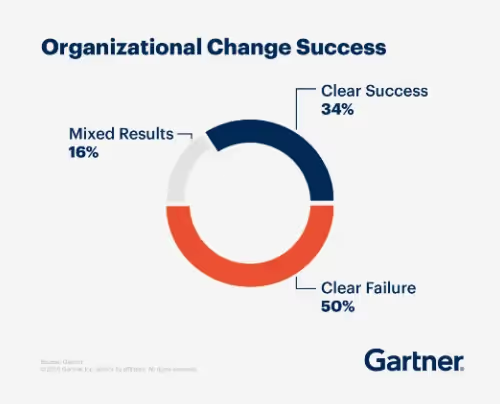
Advanced Research
The Most Cutting-Edge Consumer Insights Software of 2026
Team Remesh
January 5, 2026
Market Research
Articles

Advanced Research
The Most Cutting-Edge Consumer Insights Software of 2026
Team Remesh
January 5, 2026
Market Research
Articles

Research 101
Introducing: Poll Comparison - Streamline Concept Testing and Make Better Decisions Faster
Emmet Hennessy
November 24, 2025
Market Research
Articles

Research 101
Introducing: Poll Comparison - Streamline Concept Testing and Make Better Decisions Faster
Emmet Hennessy
November 24, 2025
Market Research
Articles

AI
Purpose-Built for Research AI is Here - a Letter from the CPO
Jessica Dubin
October 21, 2025
Market Research
Articles

AI
Purpose-Built for Research AI is Here - a Letter from the CPO
Jessica Dubin
October 21, 2025
Market Research
Articles

Advanced Research
Unlock Agile Global Insights: Using Remesh Multi-Language Conversations for Research Across Audiences
Customer Success Team
October 14, 2025
Market Research
Articles

Advanced Research
Unlock Agile Global Insights: Using Remesh Multi-Language Conversations for Research Across Audiences
Customer Success Team
October 14, 2025
Market Research
Articles

AI
The Prompt Is the New Moderator Guide
Anthony Lam
September 16, 2025
Market Research
Articles

AI
The Prompt Is the New Moderator Guide
Anthony Lam
September 16, 2025
Market Research
Articles

AI
Building an AI-Ready Research Stack: Beyond Data Preparation
Anthony Lam
September 9, 2025
Market Research
Articles

AI
Building an AI-Ready Research Stack: Beyond Data Preparation
Anthony Lam
September 9, 2025
Market Research
Articles

AI
Agentic AI for Research: A Practical Primer
Dan Reich
September 2, 2025
Market Research
Articles

AI
Agentic AI for Research: A Practical Primer
Dan Reich
September 2, 2025
Market Research
Articles
7 Organizational Change Management Frameworks That Stick
Let’s rephrase: In any business environment, change should happen. It shows you're committed to the kind of growth and evolution it takes to stay modern, relevant, and competitive.



Change in business is inevitable.
Let’s rephrase: In any business environment, change should happen. It shows you're committed to the kind of growth and evolution it takes to stay modern, relevant, and competitive.
Countless factors make change in business inevitable. Think of technological advancements, globalization, cultural shifts, and shifting economies. And since nobody's corporate goals include falling behind or growing stale, embracing change is a must.
But what kind of change are we talking about here? Change can include things like:
- Introducing new software or updating marketing practices
- Updated business processes
- A full-on restructuring
- Leadership changes
- Updated thinking
- New project management tools
- Budget constraints
- Shifts in strategy
These all fall under the umbrella of organizational change. If you’re already on board with shaking things up, you’re ahead of the game. And you're not alone.
According to Gartner, 99% of all organizations have undergone a major organizational change in the last three years. But big or small, change in business doesn't happen naturally. Therefore, effective change requires a clear action plan.
What is Organizational Change Management?
Simply put, it's is a game plan. It’s a methodology that helps businesses adapt to adjustments of all kinds. It helps employees, stakeholders, and project teams prepare and set expectations for coming change. It helps businesses roll out and acclimate to change.
To say this concept is broad and open-ended is an understatement. This is by design. The idea exists to support whatever potential problems your organization comes up against that don’t involve business as usual.
Organizational Change Management Techniques
There are countless OCM methods out there. Each involves a basic series of steps or practices that could be linear or cyclical in approach. Some of the most popular methods include:
- Kotter 8-Step Process for Leading Change: Create → Build → Form → Enlist → Enable → Generate → Sustain → Institute
- McKinsey & Company’s 7-S Framework: Style, Skills, Systems, Structure, Staff, and Strategies = Shared Values & Goals
- Kurt Lewin’s Change Model: Unfreeze → Change → Refreeze
- ADKAR Model: Awareness → Desire → Knowledge → Ability → Reinforcement
- The Kübler-Ross Model: Shock → Anger → Bargaining → Depression → Acceptance
- Satir Change Management Model: Late Status Quo → Resistance → Chaos → Integration → New Status Quo
- William Bridges’ Transition Model: Ending → Neutral Zone → New Beginnings
However, there is no right or wrong in terms of which method to choose. Any method can facilitate smooth transitions and positive change in business. The best method depends on the organization and stakeholder needs and preferences. Methods are generally seen as interchangeable.
The Standard
Regardless of the method being applied, let’s get an overarching sense of how organizational change management happens. One of the most popular and widely accepted guiding approaches out there is The Association of Professional Change Management (ACMP) Standard for Change Management.
The ACMP Standard includes a definition of practices, processes, tasks, and activities for change management. It also includes guidance for any type of change and generally accepted practices and processes across industries, organizations, and roles.
Here’s how the association breaks down organizational change management across companies and industries:
Step 1
Evaluate Change Impact & Readiness
Examine the proposed change, how it will impact the organization, and whether the organization is ready.
Step 2
Formulate Your Strategy
Develop an approach for taking the organization from point A to point B while achieving specific outcomes.
Step 3
Develop Change Management Plans
Document scope, actions, timelines, and resources necessary for the success of your plan.
Step 4
Executing Change Management Plans
Address implementation by monitoring, measuring, and controlling delivery against baseline plans.
Step 5
Closing the Change Management Effort
Documents the actions and resources needed to close the change.
Moreover, breaking the process into doable parts makes it more manageable. It also provides a framework and a clear vision for everyone on board. It’s key to make sure you’re all working toward the same goal.
Organizational Change Management Challenges
Business transitions require support because change is hard. It’s unfamiliar. It’s disruptive and can feel threatening. It has the ability to cause confusion amongst your team members, delays in timelines, frustrated employees, lower productivity, and beyond.
Organizational change management helps stakeholders get buy-in for their business case. It helps foresee, prepare, and handle change-related issues. It’s about recognizing all of the ways that change impacts things. From there, change management makes the process as painless as possible for everyone involved.
It’s important to look at employee involvement during this process.
Let’s be real. Organizations can’t run successful change management without people's power. That’s why companies should involve employees in the organization's change management process from start to finish, whether through something as involved as an online focus group or simply as a survey. Without employee buy-in, change management can fail.
Extract from: Driving Organizational Change with Business Insider (Webinar)
But uninvested stakeholders aren’t the only reason organizational change management fails. It also takes a knowledgeable, prepared leadership, and an HR team that is equipped for the process. The top three reasons that change management fails are:
- Poorly planned integration approaches and communication plan
- Incorrect target or goal identification
- Delayed implementation
These issues lie with the change management planners. They are tasked with identifying a change process that will work for their business. From there, they must keep the project on time and on target to ensure project success.
Watch: Driving Organizational Change with Business Insider (Webinar)
Making Changes That Stick
Some 70% of all organizational change transformations fail, according to McKinsey. Gartner begs to differ, with research that shows 50% of organizational change efforts are considered a clear failure. But that’s still pretty darn dismal!

Change has to happen. But if nearly half of all organizational changes are considered failures, how can leaders and stakeholders ensure transitional success? There are a number of ways to make the change smoother.
Get your employees on board
Clear and effective communication is key.
Keep employees in the loop on vision and strategy. Share the key messages and your reasoning behind change-making decisions. Allow them to feel heard, and ensure they know the important role they’re expected to play.
One of the easiest ways to ensure this is by conducting an employee engagement survey or focus group, like the one below. Establish a number of open-ended questions to gauge interest in organizational change, or try a focus group for more detailed qualitative responses.
Extract from: Driving Organizational Change with Business Insider (Webinar)
If you make sure employees are part of the process, they will feel invested. And, they will be more inclined to champion the cause.
Read: 100 Open-Ended Employee Engagement Questions

Plan for the worst
Another way that OCM success happens is by planning for the worst. Know how you’ll handle things that don’t go according to plan! Expecting setbacks and overcoming hurdles has to be baked into your strategy. It’s the only path to success.
You can’t know when issues will arise. But you can mitigate risk by taking inventory on a regular basis and employing a resistance management plan.
Milestones and timelines may need renegotiating, expectations may need to be reset, and project leads and liaisons could be reevaluated. But, if you expect these things as part of the journey, you won’t be flustered when they happen along the way.

Empower, don’t mandate
The most successful outcomes occur by empowering your people and planning for pitfalls. Remember that a successful transformation is about real change. It’s not just about meeting goals.
Why is Organizational Change Management Important?
Change is inevitable. As the world around us evolves, so must we. And it’s not just one change, just one time.
Organizational change management matters because how people feel about it have a tremendous impact on your entire business. This includes the change itself, but also the entire process, as well as their involvement. Change is meaningless unless the people it impacts on a day-to-day basis are behind it.
We live in a rapidly changing world that shows no signs of slowing down. But, process-driven dilemmas around change implementation are possible, thanks to organizational change management.
Choose a method or framework that jives with your company and vision. Check-in often. Communicate at every stage. Apply proper project management.
Then, enjoy the results that come from a well-planned, well-implemented institutional change! And the sound knowledge that your employees are behind a big decision.
Want to empower your employees while change is happening in the workplace? Check our latest insights report on how Generative AI is impacting employees.
-
Lorem ipsum dolor sit amet, consectetur adipiscing elit. Suspendisse varius enim in eros elementum tristique. Duis cursus, mi quis viverra ornare, eros dolor interdum nulla, ut commodo diam libero vitae erat. Aenean faucibus nibh et justo cursus id rutrum lorem imperdiet. Nunc ut sem vitae risus tristique posuere.
-
Lorem ipsum dolor sit amet, consectetur adipiscing elit. Suspendisse varius enim in eros elementum tristique. Duis cursus, mi quis viverra ornare, eros dolor interdum nulla, ut commodo diam libero vitae erat. Aenean faucibus nibh et justo cursus id rutrum lorem imperdiet. Nunc ut sem vitae risus tristique posuere.
-
More


Introducing: Poll Comparison - Streamline Concept Testing and Make Better Decisions Faster

.png)

.png)
Read More

.png)
.png)
.png)

.png)

.png)
Learn More

.png)
.png)
.png)

Stay up-to date.
Stay ahead of the curve. Get it all. Or get what suits you. Our 101 material is great if you’re used to working with an agency. Are you a seasoned pro? Sign up to receive just our advanced materials.






